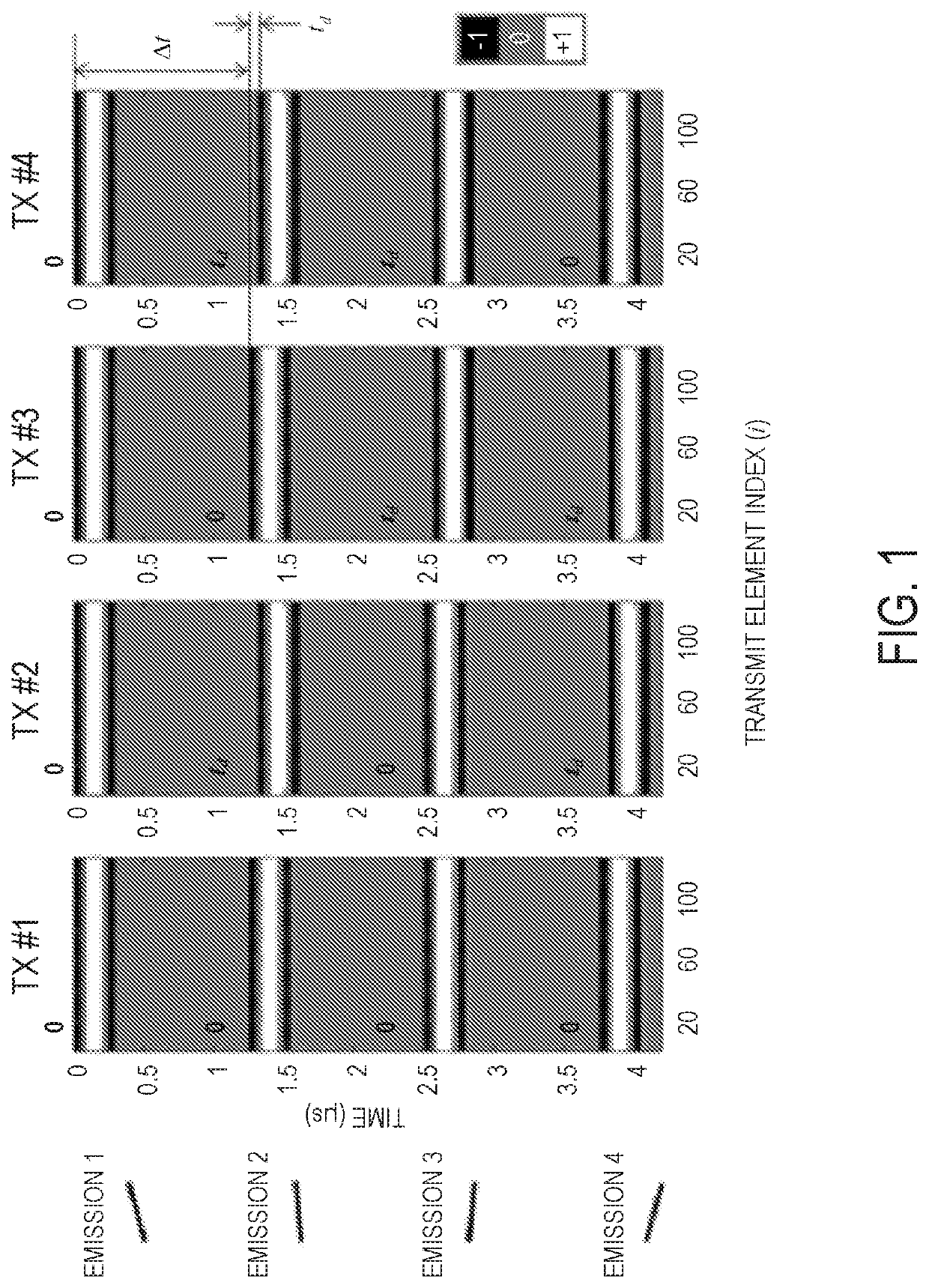Delay-encoded harmonic imaging with an ultrasound system
a delay-encoded, harmonic imaging technology, applied in the direction of instruments, measurement devices, complex mathematical operations, etc., can solve the problems of low snr when imaging deep regions, unsatisfactory resolution, and the general problem of ultrafast ultrasound imaging techniques
- Summary
- Abstract
- Description
- Claims
- Application Information
AI Technical Summary
Benefits of technology
Problems solved by technology
Method used
Image
Examples
Embodiment Construction
[0021]Described here are systems and methods for ultrasound imaging using a delay-encoded harmonic imaging (“DE-HI”) technique, in which a multiplane wave (“MW”) sequence is coded using temporal delays between emissions within a single transmission event. This coded scheme allows for harmonic imaging to be implemented. The temporal time delay codes are applied temporally to multiple different plane waves within a single transmission event, rather than spatially across different transmitting elements. The received radio frequency (“RF”) signals undergo a decoding process in the frequency domain to recover the signals, as they would be obtained from standard single plane wave emissions, for subsequent compounding. As one specific example, a one-quarter period time delay can be used to encode the 2nd harmonic signals from each angle emission during a single MW transmission event, rather than inverting the polarity of the pulses as in conventional MW imaging. However, other time delays ...
PUM
 Login to View More
Login to View More Abstract
Description
Claims
Application Information
 Login to View More
Login to View More - R&D
- Intellectual Property
- Life Sciences
- Materials
- Tech Scout
- Unparalleled Data Quality
- Higher Quality Content
- 60% Fewer Hallucinations
Browse by: Latest US Patents, China's latest patents, Technical Efficacy Thesaurus, Application Domain, Technology Topic, Popular Technical Reports.
© 2025 PatSnap. All rights reserved.Legal|Privacy policy|Modern Slavery Act Transparency Statement|Sitemap|About US| Contact US: help@patsnap.com



